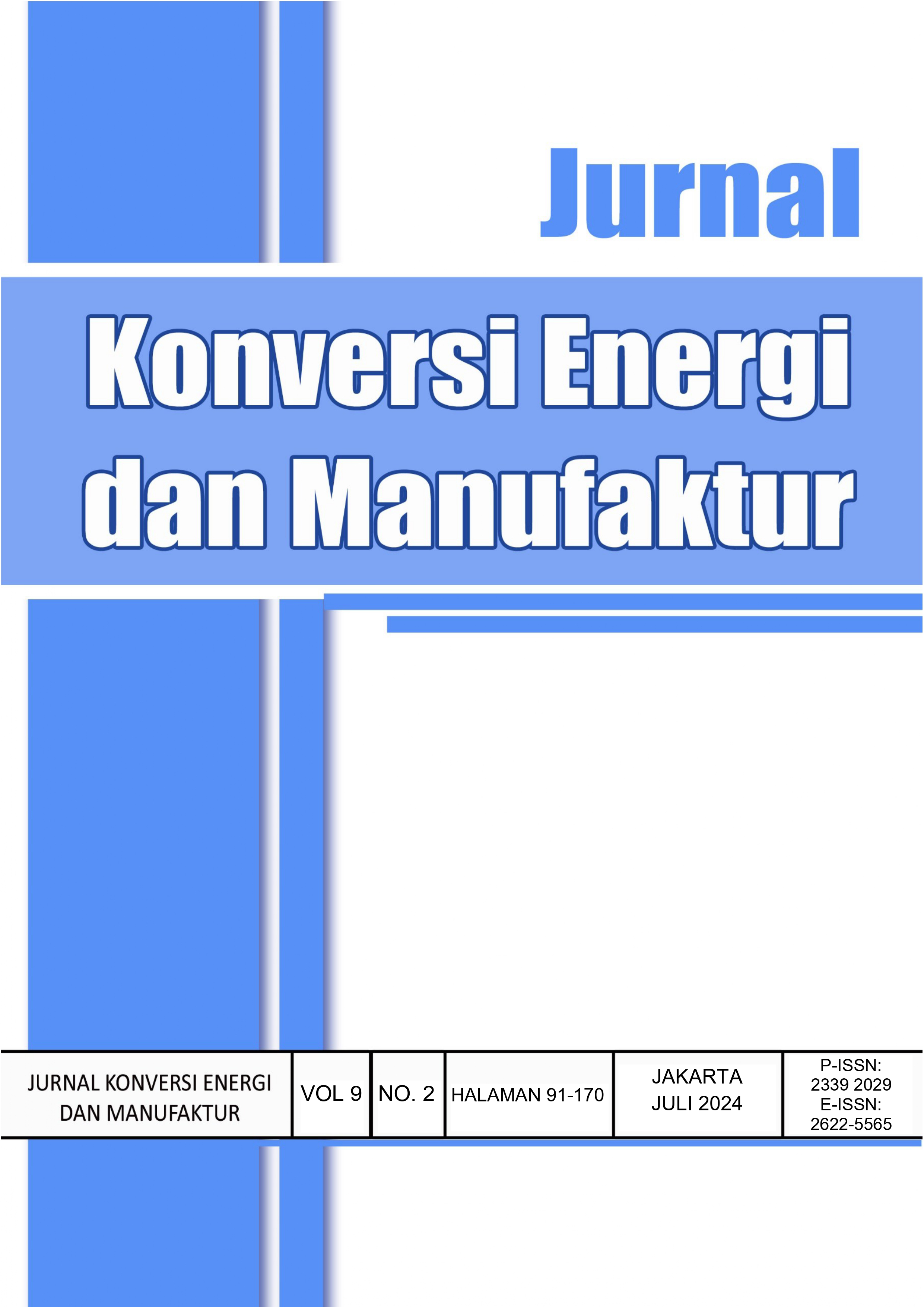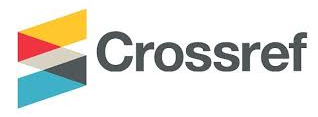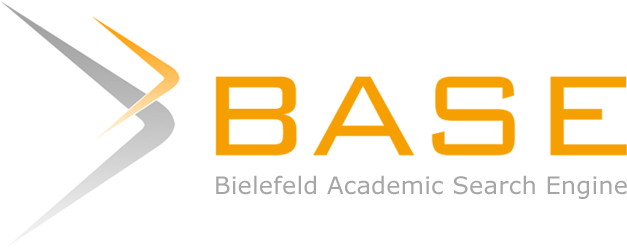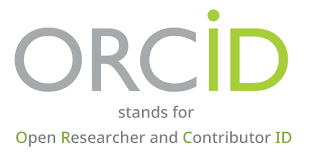PERILAKU DISTORSI, KEKERASAN DAN KOROSI HASIL HARDFACING PADA PERMUKAAN BAJA KARBON MENGGUNAKAN ELEKTRODA HV-800 DENGAN BERBAGAI KETEBALAN
Distortion, Hardness and Corrosion Behavior of Carbon Steel Hardfacing using HV-800 Electrodes with Various Thicknesses
DOI:
https://doi.org/10.21009/JKEM.9.2.7Keywords:
Welding Layer, Distorsion, Weight Loss, NaClAbstract
This research aims to look at the hardness and corrosion of the weld layer. In addition, distortions were also observed in the post-welding specimens. Weld layers were made with variations of one, two and three layers of welding using HV-800 electrodes. The first step in this research is a literature study, followed by preparing tools and materials, heating electrodes, welding process, observing distortion, cutting specimens for testing followed by hardness and corrosion testing, and data analysis and conclusions. From the results of observing the distortion, it can be seen that the thicker the weld layer, the greater the distortion that will occur. Distortions in specimens welded with one, two and three layers are 1.5, 4 and 6° respectively. Furthermore, based on the results of the hardness test, it can be seen that the thicker the weld layer, the greater the hardness. The hardness of the one, two and three layer welded specimens was 550.2, 632.82 and 650.68 HV respectively. Then, based on the weighing results, it can be seen that the longer the immersion time, the greater the reduction in mass during 120 hours of immersing. Finally, from the results of the corrosion rate calculation it can be seen that the thicker the weld layer, the lower the corrosion rate that will occur. The corrosion rates for specimens welded with one, two and three layers were 13.23, 11.02 and 10.29 mpy, respectively. All three specimens have good corrosion resistance because they fall into the "good" criteria.
References
[2] W. Wang, P. E. Jenkins, and Z. Ren, “Electrochemical Corrosion of Carbon Steel Exposed to Biodiesel/Simulated Seawater Mixture,” Corros. Sci., vol. 57, pp. 215–219, 2012, doi: 10.1016/j.corsci.2011.12.015.
[3] I. Saefuloh, Haryadi, and M. G. Winisuda, “Studi Analisa Kuat Arus Proses Elektroplating dengan Pelapis Nikel Cobalt Terhadap Kekerasan, Ketahanan Korosi, dan Penambahan Tebal Baja Karbon Rendah ST 41,” Flywheel J. Tek. Mesin Untirta, vol. III, no. 2, pp. 42–47, 2017.
[4] D. Prayitno and P. P. Indayanto, “Pengaruh Hardening Terhadap Korosi pada Baja S45C,” Metr. Ser. Teknol. dan Sains, vol. 2, no. 2, pp. 70–75, 2021.
[5] Sopiyan, Syaripuddin, A. Ahmad, D. Nanto, S. D. Yudanto, and F. B. Susetyo, “Enhancement in The Hardness and Corrosion Resistance of Mild Steel Surfaces by Nickel-Chromium Addition and Rapid Cooling After Welding,” J. Appl. Sci. Eng., vol. 27, no. 6, pp. 2655–2666, 2024, doi: 10.6180/jase.202406_27(6).0012.
[6] Syaripuddin, Sopiyan, A. Cahyadi, S. D. Yudanto, M. Y. Hasbi, and F. B. Susetyo, “Pengaruh Tebal Deposit Lasan Terhadap Properti Lapisan Menggunakan Elektroda HV 450,” J. Asiimetrik J. Ilm. Rekayasa Inov., vol. 5, pp. 285–292, 2023, doi: 10.35814/asiimetrik.v5i2.4956.
[7] Sopiyan, F. B. Susetyo, and Syamsuir, “Pengaruh Arus Terhadap Kenyamanan Welder, Cacat Las dan Kekerasan Hasil Hardfacing Baja Karbon,” J. Kaji. Tek. Mesin, vol. 3, no. 2, pp. 57–107, 2018.
[8] Y. Miranda and A. M. Made, “Analisa Perbedaan Temperatur pada Material Baja Karbon Rendah S355JO Terhadap Distorsi pada Pengelasan SMAW,” Zo. Mesin, vol. 9, no. 1, pp. 10–18, 2018.
[9] R. F. Meditama, L. C. Permadi, and F. K. Asshidiqi, “Variasi Besar Arus Listrik dan Ketebalan Pelat pada Pengelasan SMAW Terhadap Distorsi Angular Sambungan T Baja ST37,” Metrotech (Journal Mech. Electr. Technol., vol. 1, no. 2, pp. 70–75, 2022, doi: 10.33379/metrotech.v1i2.1406.
[10] M. Z. Mahbub, “Pengaruh Masukan Panas Terhadap Distorsi dan Sifat Mekanik pada Pengelasan Dissimilar Baja AISI 304 dan Baja SS400 Menggunakan Metode GTAW,” J. Ilm. Tek. Mesin, vol. 11, no. 1, pp. 24–33, 2023.
[11] S. Nikko, “Manufacturers of a Diverse Range of Advanced Welding Consumables HV-800,” 2018.
[12] L. D. Yuono and U. S. Dharma, “Pengaruh Pendinginan Cepat Terhadap Laju Korosi Hasil Pengelasan Baja AISI 1045,” Turbo J. Progr. Stud. Tek. Mesin, vol. 6, no. 1, pp. 76–83, 2017, doi: 10.24127/trb.v6i1.469.
[13] Syaripuddin, S. F. Alamsyah, and F. B. Susetyo, “Pengaruh Krom pada Sambungan Las Terhadap Sifat Mekanik Baja Karbon dengan Elektroda E 6013,” J. Asiimetrik J. Ilm. Rekayasa Dan Inov., vol. 3, no. 1, pp. 9–16, 2021.
[14] A. A. Soleh, H. Purwanto, and I. Syafa’at, “Analisa Pengaruh Kuat Arus Terhadap Struktur Mikro, Kekerasan, Kekuatan Tarik pada Baja Karbon Rendah dengan Las SMAW Menggunakan Jenis Elektroda E7016,” J. Ilm. Cendekia Eksakta, vol. 1, no. 2, pp. 29–35, 2017.
[15] E. Tambing, T. Pagasis, O. T. Ranteallo, D. Mangallo, S. P. Siregar, and Agustinus, “Analisis Pengaruh Arus Listrik dan Elektroda Terhadap Kekuatan dan Kekerasan pada Proses Pengelasan SMAW Baja Karbon Rendah,” G-Tech J. Teknol. Terap., vol. 6, no. 2, pp. 878–886, 2024.
[16] S. I. Solehah, M. Nursaleh, and D. Supriyatna, “Pengaruh Polaritas DCEN dan DCEP Terhadap Kedalaman Penetrasi Las SMAW Menggunakan Elektroda E7016,” J. Pendidik. Tek. Mesin, vol. 9, no. 1, pp. 1–14, 2022.
[17] F. B. Susetyo, I. Basori, and J. T. Simanjuntak, “Pengaruh Polaritas dan Temperatur Media Quenching Air Terhadap Kekerasan dan Korosi Deposit Lasan Baja Karbon Rendah yang Dihasilkan dari Proses SMAW Menggunakan Elektroda JIS Z 3251 DF2A-450-R,” J. Kaji. Tek. Mesin, vol. 6, no. 1, pp. 39–43, 2021, doi: 10.52447/jktm.v6i1.4395.
[18] F. B. Susetyo, A. Kholil, and M. Fatihuddin, “Efek Polaritas dan Media Pendingin Terhadap Nilai Kekerasan Permukaan Hardfacing Baja Karbon Rendah,” J. Konversi Energi dan Manufaktur, vol. 6, no. 1, pp. 1–5, 2019, doi: 10.21009/JKEM.6.1.1.
[19] L. Agustriyana, H. P. Buwono, and Sulistiyono, “Pengaruh Variasi Kuat Arus Listrik dan Waktu Proses Anodizing pada Alumunium Terhadap Laju Korosi dalam Media Larutan Garam,” J. Tek. Ilmu Dan Apl., vol. 9, no. 2, pp. 39–45, 2020, doi: 10.33795/jtia.v9i2.31.
[20] M. Adnan, N. Lukman, and N. Haniffudin, “Pengaruh Variasi Waktu Pencelupan Terhadap Ketebalan, Kekerasan dan Ketahanan Korosi Hasil Elektroplating Nikel-Hard Krom pada Baja AISI 4340,” J. Tek. ITS, vol. 7, no. 2, pp. 257–262, 2018.
[21] M. S. Azdkar, H. Pratikno, and H. S. Titah, “Analisis Pengelasan SMAW pada Baja ASTM A36 dengan Variasi Elektroda Terhadap Sifat Mekanik dan Ketahanan Biokorosi di Lingkungan Laut,” J. Tek. ITS, vol. 7, no. 2, pp. G180–G185, 2018, doi: 10.12962/j23373539.v7i2.32118.






















